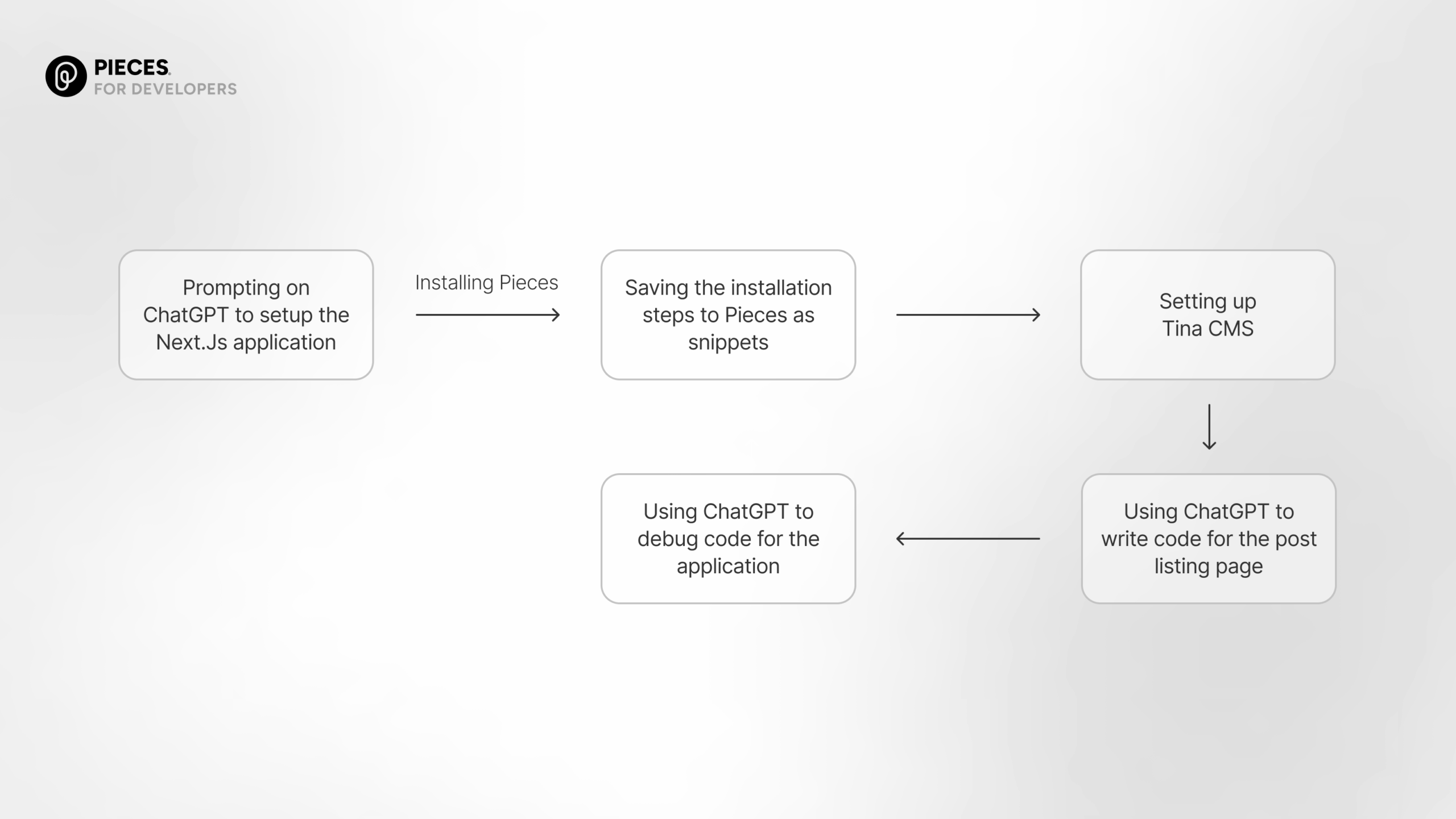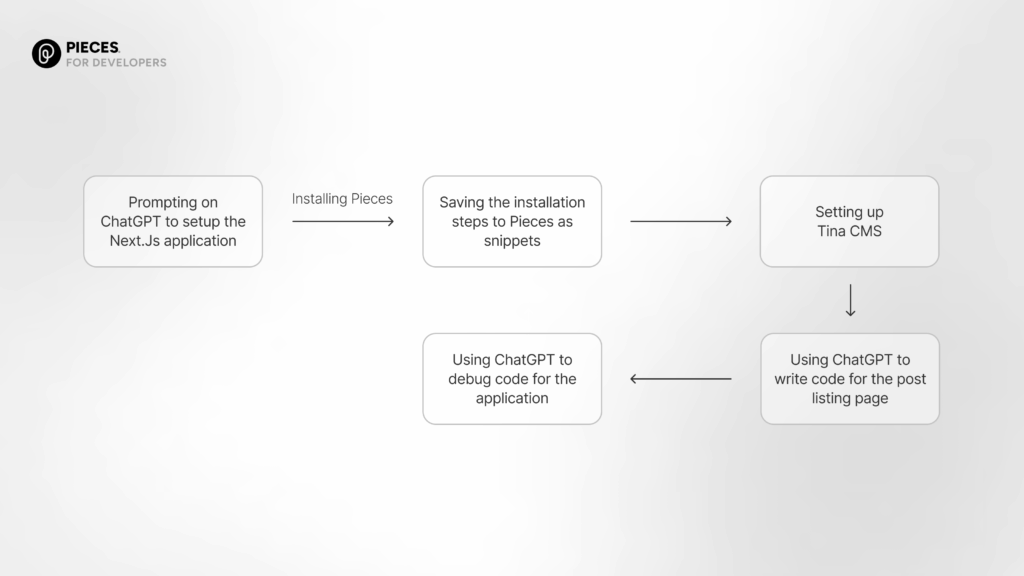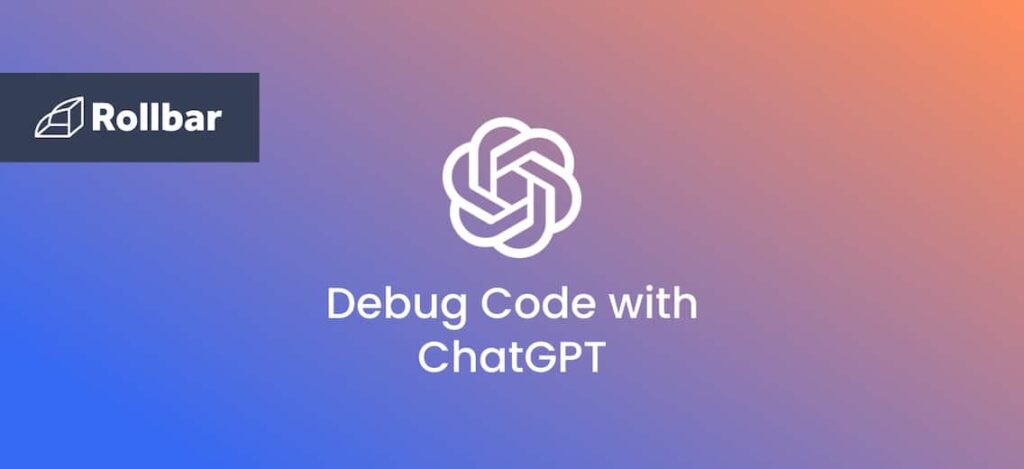Welcome to AskByteWise! I’m Noah Evans, and for over a decade, my passion has been demystifying technology. Today, we’re diving into a game-changer for anyone who’s ever stared blankly at a blinking cursor or pulled their hair out over an elusive error message: Using ChatGPT to help you write and debug code. Whether you’re a complete beginner taking your first steps into programming, a student grappling with a new language, or a small business owner looking to automate tasks, this guide is designed to show you exactly how this powerful AI can become your indispensable coding companion. Forget the steep learning curve – we’re about to make complex tech simple, empowering you to build, troubleshoot, and understand code like never before.
What is ChatGPT and Why Use It for Coding?
At its core, ChatGPT is a Large Language Model (LLM). Think of it like a super-smart digital librarian combined with a creative writing genius. It’s been trained on a massive amount of text data from the internet – everything from books and articles to, yes, billions of lines of code. This training allows it to understand your questions and generate human-like text in response.
When it comes to coding, ChatGPT isn’t just a fancy chatbot; it’s an incredibly versatile assistant. Why should you consider integrating it into your coding workflow?
- Accelerated Learning: It can explain complex concepts, translate code between languages, and simplify jargon, making learning much faster and less intimidating.
- Increased Productivity: Stuck on a tricky function? Need a quick script for a repetitive task? ChatGPT can generate code snippets, saving you hours of trial and error.
- Effective Debugging: The bane of every coder’s existence is debugging. ChatGPT can analyze your code, pinpoint errors, and suggest fixes, transforming a frustrating ordeal into a solvable puzzle.
- Accessibility: It lowers the barrier to entry for coding, allowing individuals with limited programming experience to build and modify software.
It’s like having a senior developer looking over your shoulder, ready to offer advice, explain a line of code, or help you fix a bug – but without the judgment or the hourly fee!
Getting Started: Using ChatGPT to Help You Write and Debug Code Effectively
The key to unlocking ChatGPT’s full potential for coding lies in your ability to prompt it correctly. Think of a prompt as a clear, precise instruction you give to the AI. The better your instruction, the better its response.
Here’s a step-by-step approach to interacting with ChatGPT for your coding needs:
1. Be Specific and Provide Context
Don’t just say “Write code.” Tell it what you want the code to do, why you need it, and what programming language you’re using.
- Bad Prompt: “Write a Python script.”
- Good Prompt: “I need a Python script that takes a list of numbers and returns only the even numbers. It should be a function called
filter_even_numbers.” - Even Better Prompt (with context): “I’m working on a data analysis project in Python and I need a function to efficiently filter out all odd numbers from a given list, returning only the even ones. The function should be named
filter_even_numbers(data_list).”
2. Specify the Desired Output Format
If you want just the code, say so. If you want explanations, ask for them.
- Prompt: “Please provide only the JavaScript code for a simple ‘To-Do’ list application with add and delete functionality. Do not include any explanations, just the code.”
- Prompt: “Explain the following Python code line by line, assuming I’m a beginner.”
3. Provide Examples (If Applicable)
If you have specific input/output expectations, show them to ChatGPT.
- Prompt: “I have a CSV file with columns ‘Name’, ‘Age’, ‘City’. I want a Python script that reads this file and prints the names of people older than 30.
- Input Example (CSV):
Name,Age,City Alice,25,New York Bob,35,London Charlie,40,Paris David,28,Berlin - Expected Output:
Bob Charlie“
- Input Example (CSV):
4. Iterate and Refine
Don’t expect perfection on the first try. ChatGPT is a conversational AI. If its first answer isn’t quite right, tell it what needs changing.
- Initial Prompt: “Write a Python function to calculate factorial.”
- ChatGPT Response (recursive version):
def factorial(n): if n == 0: return 1 else: return n * factorial(n-1) - Your Follow-up: “That’s good, but can you write an iterative version of the factorial function instead, using a loop?”
Noah’s Pro Tip: Think of ChatGPT as a very enthusiastic but sometimes literal intern. The more precise and detailed your instructions, the more likely you are to get exactly what you need. Don’t be afraid to experiment with your prompts!
Crafting the Perfect Prompt: Your Key to AI-Powered Code
Effective prompting is a skill, and with coding, it’s about clarity, constraints, and context. Let’s look at more structured examples.
For Generating Code Snippets:
When you need a quick piece of code, give it all the necessary ingredients:
- Language: Python, JavaScript, Java, C#, SQL, etc.
- Task: What should the code accomplish?
- Inputs: What kind of data will it receive?
- Outputs: What should it return or display?
- Constraints: Any specific libraries, efficiency requirements, or style guides.
Example Prompt:
“Generate a Python function called calculate_bmi that takes two arguments: weight (in kilograms, float) and height (in meters, float). The function should return the Body Mass Index (BMI) calculated as weight / (height * height). Include a docstring explaining the function’s purpose and arguments. I need to use this in a web application, so make sure it’s robust and handles potential ZeroDivisionError if height is zero by returning None and printing an error message.”
For Explaining Code:
This is invaluable for learning. You can ask it to break down complex logic, explain unfamiliar syntax, or translate it into simpler terms.
Example Prompt:
“Explain the following JavaScript code snippet to me as if I’m new to programming. Focus on what each line does and why it’s used in this context:
const numbers = [1, 2, 3, 4, 5];
const doubled = numbers.map(num => num * 2);
console.log(doubled);“
For Refactoring and Optimizing Code:
If your code works but feels clunky or slow, ChatGPT can often suggest improvements.
Example Prompt:
“I have this Java code for reading a large file line by line. Can you suggest ways to optimize it for performance, especially concerning memory usage, if the file is extremely large?
import java.io.BufferedReader;
import java.io.FileReader;
import java.io.IOException;
public class FileReaderExample {
public static void main(String[] args) {
String fileName = "large_data.txt";
try {
FileReader fileReader = new FileReader(fileName);
BufferedReader bufferedReader = new BufferedReader(fileReader);
String line;
while ((line = bufferedReader.readLine()) != null) {
System.out.println(line);
}
bufferedReader.close();
} catch (IOException e) {
e.printStackTrace();
}
}
}“
Practical Applications: Writing Code with ChatGPT
Let’s get into the “how-to” with some real-world scenarios for code generation.
1. Generating Boilerplate Code
Many projects start with repetitive setup code. ChatGPT can whip this up instantly.
- Scenario: You need a basic HTML structure with linked CSS and JavaScript files.
- Prompt: “Generate a basic HTML5 boilerplate with a linked
style.cssin the head and a linkedscript.jsjust before the closing body tag. Include a<h1>tag inside the<body>with the text ‘My Awesome Project’.”
2. Creating Functions and Algorithms
When you know what you want to achieve but aren’t sure how to code the logic.
- Scenario: You need a function to convert temperatures from Celsius to Fahrenheit.
- Prompt: “Write a JavaScript function
celsiusToFahrenheitthat takes a temperature in Celsius as input (a number) and returns the equivalent temperature in Fahrenheit. The formula isF = C * 9/5 + 32.”
3. Data Manipulation Scripts
Automating tasks involving data is a common use case.
- Scenario: You have a list of strings and want to filter out duplicates and sort them alphabetically.
- Prompt: “I have a Python list of strings
my_fruits = ['apple', 'banana', 'orange', 'apple', 'grape', 'banana']. Write a Python script to remove any duplicate entries and then print the unique fruits sorted alphabetically.”
4. Learning New Libraries or Frameworks
ChatGPT can provide examples for using new tools.
- Scenario: You’re learning the Pandas library in Python and want to know how to load a CSV into a DataFrame and display the first 5 rows.
- Prompt: “Show me how to use the Pandas library in Python to read a CSV file named
data.csvinto a DataFrame and then display the first 5 rows. Assumedata.csvexists and has standard comma-separated values.”
Practical Applications: Debugging Code with ChatGPT
Debugging is where ChatGPT truly shines, turning frustrating error messages into learning opportunities.
1. Understanding Error Messages
Error messages can be cryptic, especially for beginners. ChatGPT can translate them.
- Scenario: You receive a
TypeError: 'str' object is not callablein Python. - Prompt: “I’m getting this Python error:
TypeError: 'str' object is not callable. What does this error mean, and what are the common causes and solutions for it?”
2. Identifying and Fixing Bugs
Provide your problematic code and the error message (or unexpected behavior).
- Scenario: Your Python script is supposed to add numbers, but it’s concatenating them.
- Prompt: “My Python script below is supposed to sum two numbers, but it seems to be combining them as strings instead of adding them numerically. Can you find the bug and suggest a fix?
num1 = input("Enter first number: ") num2 = input("Enter second number: ") sum_result = num1 + num2 print("The sum is:", sum_result)”
3. Explaining Unexpected Output
When your code runs but doesn’t produce the expected results.
- Scenario: Your JavaScript array filter isn’t working as expected.
- Prompt: “I have this JavaScript code, and I’m trying to filter out numbers less than 10. However, my
filteredNumbersarray is empty when it shouldn’t be. What am I doing wrong?const numbers = [5, 12, 8, 20, 3]; const filteredNumbers = numbers.filter(number => number > "10"); console.log(filteredNumbers); // Expected: [12, 20], Actual: []“
Beyond Writing & Debugging: Other Coding Tasks for ChatGPT
ChatGPT’s utility extends far beyond just writing and fixing code.
1. Code Review and Best Practices
It can act as a virtual code reviewer, pointing out areas for improvement.
- Prompt: “Can you review this Java code for a simple calculator? Point out any areas where best practices might be violated, suggest improvements for readability, or identify potential performance issues.
public class Calculator { public int add(int a, int b) { return a + b; } public int subtract(int a, int b) { return a - b; } public int multiply(int a, int b) { return a * b; } public double divide(int a, int b) { return (double) a / b; } }“
2. Translating Code Between Languages
A fantastic tool for learning a new language by seeing familiar logic in a new syntax.
- Prompt: “Translate the following Python function that reverses a string into an equivalent JavaScript function:
def reverse_string(s): return s[::-1]“
3. Generating Test Cases
Ensuring your code works correctly under various conditions.
- Prompt: “I have a Python function
is_prime(n)that checks if a number is prime. Generate 5 diverse test cases (including edge cases like 0, 1, negative numbers, and small/large primes/non-primes) that I can use to test this function.”
4. Creating Documentation
Well-documented code is easier to maintain.
- Prompt: “Write a detailed docstring for the following Python function, explaining its purpose, parameters, and what it returns:
def calculate_average(numbers_list): if not numbers_list: return 0 return sum(numbers_list) / len(numbers_list)“
Best Practices and Ethical Considerations
While ChatGPT is an incredible assistant, it’s crucial to use it responsibly.
Always Verify the Code
ChatGPT can sometimes generate plausible-looking but incorrect code, or code that uses deprecated methods. Never copy-paste AI-generated code directly into a production environment without thoroughly testing and understanding it yourself. Think of it as a starting point, not a final solution.
Understand What You’re Using
Don’t let ChatGPT be a crutch. Use it as a learning tool. Ask “why” it suggested a particular solution, not just “what” the solution is. Your goal should be to eventually understand the code it generates.
Security and Privacy
Be extremely cautious about pasting sensitive or proprietary code into ChatGPT. The data you input may be used to train future models, potentially exposing your company’s intellectual property. Always sanitize code (remove sensitive data, API keys, etc.) before sharing it with an AI.
Bias and Fairness
AI models can inadvertently perpetuate biases present in their training data. Be aware that code generated by AI might not always be fair, inclusive, or universally applicable, especially in areas like data analysis or machine learning where ethical considerations are paramount.
The Human Element Remains Key
ChatGPT is a tool, not a replacement for human creativity, critical thinking, or problem-solving. It can handle routine tasks, but complex architectural decisions, innovative solutions, and true understanding of user needs still require human insight.
The Future of Coding with AI
The landscape of software development is rapidly evolving with AI at its forefront. We’re moving towards a future where AI assistants are not just helpers but integral parts of the development lifecycle. Imagine AI tools that can:
- Proactively suggest improvements as you type, not just after you ask.
- Generate entire applications from high-level descriptions.
- Automatically translate design mockups into functional front-end code.
- Identify security vulnerabilities and propose fixes in real-time.
Recent studies (hypothetically, from a future AskByteWise.com report) indicate that developers using AI tools report a 30-50% increase in productivity for certain tasks. This isn’t about replacing developers; it’s about augmenting their capabilities, freeing them from repetitive tasks, and allowing them to focus on innovation and complex problem-solving. The job of the future developer will involve more prompt engineering, AI model supervision, and critically, understanding how to best leverage these powerful tools.
Conclusion
Using ChatGPT to help you write and debug code is no longer a futuristic concept; it’s a present-day reality transforming how we interact with technology. From generating basic scripts and explaining arcane error messages to suggesting optimizations and even writing documentation, ChatGPT is an invaluable asset for anyone looking to enter or advance in the world of coding.
Remember the core principles: be specific in your prompts, iterate on your requests, and always, always verify the output. Embrace ChatGPT not as a magic bullet, but as a powerful assistant that, when wielded thoughtfully, can dramatically accelerate your learning, boost your productivity, and ultimately, make the complex world of coding much simpler and more accessible. Happy coding!
Frequently Asked Questions (FAQ)
Q1: Is ChatGPT going to replace human programmers?
A1: No, not in the foreseeable future. ChatGPT is a powerful assistant that augments human capabilities. It can handle repetitive tasks, generate boilerplate code, and help debug, but it lacks the creativity, critical thinking, strategic planning, and understanding of complex human needs that are essential for high-level software development. The role of programmers is evolving to include more AI supervision and prompt engineering.
Q2: What programming languages can ChatGPT help with?
A2: ChatGPT has been trained on a vast amount of code from the internet, so it can assist with a wide range of popular programming languages, including Python, JavaScript, Java, C++, C#, Go, Ruby, Swift, PHP, SQL, HTML, CSS, and many more. Its effectiveness might vary slightly depending on the language’s prevalence in its training data, but for most mainstream languages, it’s highly proficient.
Q3: How accurate is the code generated by ChatGPT?
A3: ChatGPT’s code generation is generally good, often producing correct and functional code. However, it’s not infallible. It can sometimes generate code that is syntactically correct but logically flawed, uses deprecated methods, or introduces subtle bugs. Therefore, it’s crucial to always test, review, and understand any code generated by ChatGPT before implementing it.
Q4: Can ChatGPT debug code in any development environment?
A4: ChatGPT is an AI model that interacts via text. It doesn’t directly integrate with your Integrated Development Environment (IDE) or debugging tools. You provide your code and error messages (or descriptions of unexpected behavior) to ChatGPT as text prompts, and it provides suggestions and explanations back as text. You then apply those suggestions manually in your development environment.
Q5: Is it safe to put sensitive code into ChatGPT?
A5: It is generally not recommended to paste sensitive or proprietary company code, personal identifiable information (PII), or API keys directly into ChatGPT. The data you input into public AI models may be used for further model training, which could potentially expose your sensitive information. Always anonymize or generalize your code and remove any sensitive details before sharing it with an AI.
See more: Using ChatGPT to Help You Write and Debug Code.
Discover: AskByteWise.


